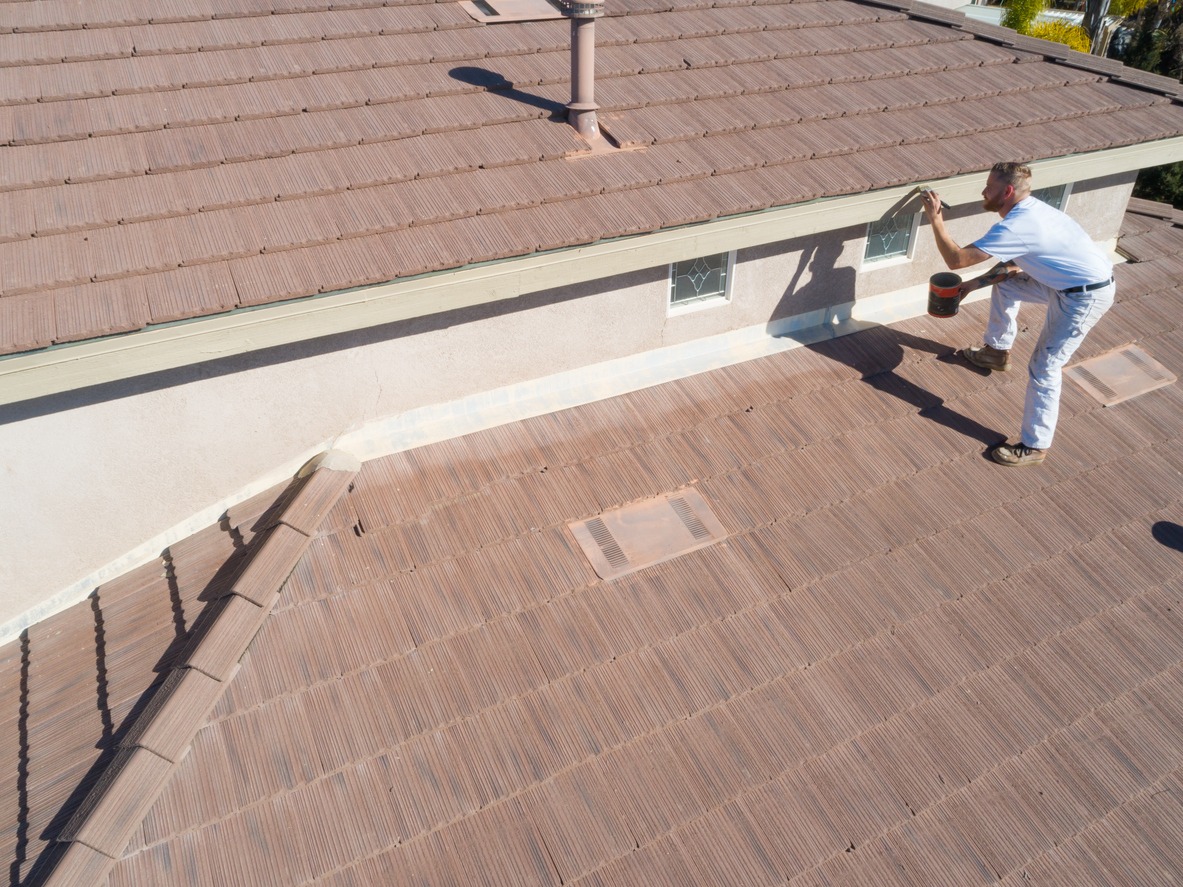Painting your home lets you pick top-quality paints, colors, and finishes. This article guides you in choosing the best paints and coatings for your home’s exterior surfaces (depending on their type and present condition).
Choosing exterior paints involves considering the following factors:
- Weather exposure
- Durability
- Matching home materials and architectural details
- Matching the immediate surroundings (such as your landscape or neighboring homes)
- Climate
- Surface preparation
These factors help you ensure your exterior paint’s longevity and performance.
The benefits of using quality exterior paints
Quality should be paramount when choosing house paints and coatings. High-quality exterior paints offer a range of benefits, making them a worthwhile investment for homeowners and property managers. Here are some of the key advantages:
- Durability – High-quality exterior paints can withstand harsh weather conditions, including extreme heat, cold, rain, and UV radiation. This durability ensures that the paint lasts longer, reducing the need for frequent repainting.
- Protection – Quality paints protect exterior surfaces against environmental elements such as moisture, which can cause mold, mildew, and rot. They also help protect the surface from insects and other pests.
- Aesthetic appeal – Premium exterior paints tend to have richer pigments and better coverage, resulting in a more vibrant and consistent finish. They can enhance the curb appeal of a property, adding to its overall value.
- Ease of application – High-quality paints often have better consistency and flow, making them easier to apply evenly. They can save time and effort during painting and produce a more professional-looking finish.
- Fade resistance – Superior exterior paints can resist fading caused by UV rays. This means the color will remain vibrant for long periods, maintaining the property’s aesthetic appeal.
- Resistance to cracking and peeling – Quality paints have better adhesion properties and flexibility, which helps prevent cracking, peeling, and blistering over time. They also enhance the longevity of the paint job.
- Low maintenance – Because they resist dirt, grime, and stains, high-quality exterior paints require less frequent cleaning and maintenance, potentially saving time and money in the long run.
- Energy efficiency – Some high-quality exterior paints have reflective properties that can help reduce heat absorption, thereby improving the energy efficiency of the building. It can result in lower cooling costs in hot and arid areas.
- Environmental benefits – Many premium exterior paints are formulated to be low in volatile organic compounds (VOCs) and other harmful chemicals, making them more environmentally friendly and safer for human health.
- Warranty and support – Reputable manufacturers of quality exterior paints often offer warranties and customer support, providing additional peace of mind and protection for the investment.
Investing in quality exterior paint can lead to long-term cost savings, better property protection, and enhanced visual appeal.
The best paints and coatings for your home’s exterior surfaces
Choosing the best paints and coatings for your home’s exterior surfaces is crucial for protecting it from the elements and ensuring a lasting, attractive appearance. Here’s a detailed overview of some of the best options available:
1. Acrylic latex paint
Acrylic latex paint is water-based, offering ease of use and clean-up. It is known for its durability and flexibility, making it suitable for various surfaces, including wood, stucco, and vinyl.
Advantages:
- Durability: Resistant to cracking and peeling.
- Flexibility: Can expand and contract with temperature changes.
- Ease of application: Dries quickly and has a low odor.
- UV resistance: Resists fading from sunlight.
- Best for: Wood siding, brick, aluminum siding, and stucco.
2. Oil-based paint
Oil-based paint, also known as alkyd paint, is known for its smooth finish and strong adhesion.
Advantages:
-
- Durability: Extremely durable and resistant to wear and tear.
- Adhesion: Adheres well to most surfaces, including those that are chalky.
- Finish: Provides a smooth, hard finish that is easy to clean.
Disadvantages:
- VOC content: Higher levels of volatile organic compounds (VOCs) require good ventilation during application.
- Drying time: Longer drying times compared to water-based paints.
- Best For: Metal, doors, trim, and older, previously painted surfaces.
3. Elastomeric paint
Elastomeric paint is a highly durable, flexible coating that protects masonry surfaces.
Advantages:
- Waterproofing: Excellent water resistance, making it ideal for damp climates.
- Crack bridging: Can bridge small cracks, providing a continuous, flexible coating.
- Durability: Long-lasting and highly resistant to weathering.
- Best for: Stucco, concrete, masonry, and brick.
4. Epoxy paint
Epoxy paint is a tough, durable coating often used for surfaces requiring extra protection.
Advantages:
-
- Strength: Extremely strong and resistant to abrasion, chemicals, and moisture.
- Durability: Long-lasting and can withstand heavy wear.
- Adhesion: Bonds well to a variety of surfaces.
Disadvantages:
- Application: Requires careful surface preparation and sometimes a primer.
- UV stability: Some formulations may turn yellow when exposed to UV light.
- Best for: Concrete floors, garage floors, and other high-traffic areas.
5. Silicone-based coatings
Silicone-based coatings are highly flexible and water-resistant, making them ideal for extreme weather conditions.
Advantages:
- Water Resistance: Excellent at repelling water and preventing leaks.
- Flexibility: Maintains flexibility over a wide range of temperatures.
- Durability: Resistant to UV radiation and oxidation.
- Best for: Roofs, masonry, and surfaces exposed to harsh weather conditions.
6. Stain
Exterior stains are an excellent option for wood surfaces. They enhance the wood’s natural beauty while providing protection.
Advantages:
- Natural look: Preserves and highlights the natural grain of the wood.
- Penetration: Penetrates the wood to provide thorough protection.
- Variety: Available in semi-transparent, transparent, and solid formulations.
- Best for: Decks, fences, and wood siding.
Important factors to consider
Before shopping for exterior paints, keep these essential factors in mind:
- Climate – Choose a paint or coating that can withstand the specific weather conditions in your area.
- Surface material – Different surfaces require different types of paint for optimal adhesion and durability.
- Maintenance – Consider the ease of maintenance and reapplication.
- Environmental impact – Look for low-VOC and eco-friendly options to reduce environmental impact.
- Aesthetic preferences – The finish and color options available with different paints and coatings can impact your choice based on your desired aesthetic.
Conclusion
Choosing exterior paints requires considering certain factors. Exterior surfaces are constantly exposed to environmental, weather, and climate elements. You must also pay attention to the type of surface material, immediate surroundings, maintenance, environmental impact, and aesthetic preferences.
These factors enable you to select the right exterior paint or coating. Doing so ensures your home’s exterior surfaces remain protected and look fantastic for years to come.
Custom Painting, Inc.’s skilled residential painters provide high-quality, reliable, and efficient services. We offer various paint services that protect, preserve, and beautify your home. Please schedule an appointment with us by phone at 925-294-8062 or by message on our contact form. We’ll be happy to discuss your project and provide a free and detailed quote today.


